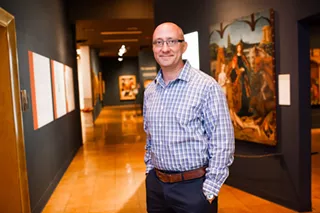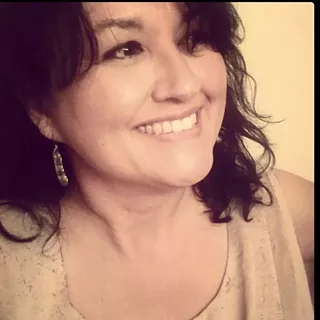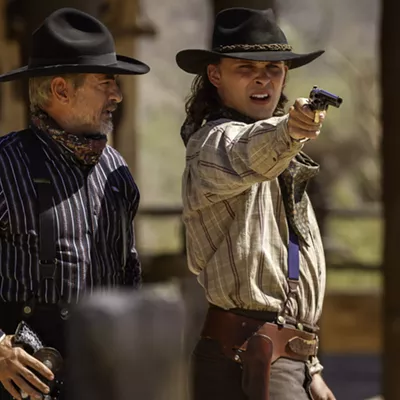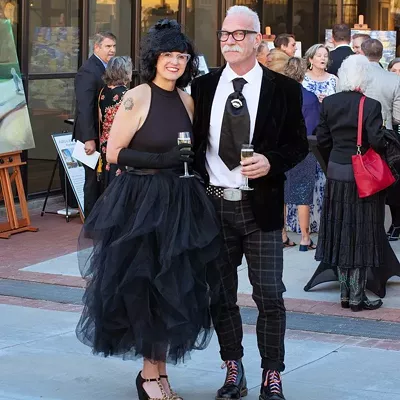Perhaps it's the UA Museum of Art's unassuming red brick exterior that's misleading, sandwiched between the university's art school and music and theater buildings on the northwest edge of campus.
However, inside it holds a striking collection of paintings, drawings and sculpture from hundreds of significant 20th Century American, European and modern artists. Yet that collection and the outreach and community work going on inside the museum every day go largely unrecognized by the campus and greater community.
That's something W. James Burns wants to change. The new museum director, who started in September, said it's the community's lack of knowledge about the museum's programs and specific works in the collections that at times can frustrate him most.
To help change those perceptions, the museum began a series of town hall meetings last month, asking different groups to answer specific questions with the goal of using the data collected to put together a strategic plan, something the museum hasn't done since 2005.
Questions started out basic—are/were you aware that the UA had a museum of art on campus and have you visited the museum? And to get to deeper information, one question asked for an adjective that best describes the museum they envision three years from now. Other questions: What needs to be preserved as the museum reinvents itself? Name one thing you'd like to change? What alliances or opportunities should the museum consider?
"It's hard to figure out your resources without understanding the changes that need be made or where we need to go," Burns told the Weekly, from his office on the main floor of the museum. "We suffered from some severe budget cuts a few years ago, so it's more important to assess everything that's on the table and the things we should be doing.
"I could have come in and had a vision and written a plan, but then it would have ended up on the shelf like this one," he added, grabbing a three-ring binder from the shelf near his desk.
Burns said some of data collected was surprising, but he already knew the good and the bad. The feeling and perceptions of the museum, however, ran a bit deeper than he thought they would. But what became clear as they asked people who attended the planning meetings what they knew about programs taking place at the museum, they learned they're "not doing a great job of telling our stories–not enough about our collection, programs and our collaborations."
On the collection, one example Burns gave related back to the Tucson Weekly and a story we ran on the current Tucson Museum of Art exhibit, The Figure Examined: Masterworks from the Kasser Mochary Art Foundation, with many world famous artists, such as Pablo Picasso, Andy Warhol, Henri Matisse and Auguste Rodin. A line in the story that the show was a rare opportunity for people in Tucson to see some huge name artists that they wouldn't get a chance to see otherwise, well, that wasn't true—considering some of those same names hang in the UA Museum of Art.
"Almost all of those artists are in our collection," Burns said.
This, as the new director of the museum, is what Burns wants to change.
The museum professional came about his work in an unusual way—more by what he calls design. He started his career in 1990, in his ungraduated years at the UA. Burns described his own academic and career story, as a good UA success story.
He came to the UA from Rochester, New York as a horticulture major, and after changing his major several times he walked into the history department his sophomore year and looking at an office chart on careers in history, museum curator jumped out. He loved museums. As a kid, Burns said, he dragged his family to every museum they could visit on family trips. The department advisor sent him to the Arizona State Museum and that's where he got his first job.
"I've had a paying job in museum work ever since," he said, smiling.
While he never saw himself as a museum director, he's been bitten and he recognizes that he's a unique director who has worked in almost every facet of museum work—archivist, administrator, development and more. He looks at this staff a bit differently as a result of having done their jobs, and he said he feels lucky to have this particular professional crew.
"I don't think I realized when I applied, I had no idea of knowing the caliber of the professionals at the museum," he said. "I have the most amazing staff I've had in my 25 year (career). They've held this museum together as it went through a 60 percent budget cut."
After graduating from the UA in the early '90s, Burns went on to work on his masters at ASU, receiving a full scholarship. From there he worked in Louisiana and then Atlanta, Georgia, where he began working on his Ph.D. in education policy at Georgia State. The entrance committee there scratched their heads when they interviewed this museum professional before them.
Burns was interested in the social and cultural foundations of education, looking at race, class and gender, and recognizing how informal learning happens in museums, this education policy Ph.D. made sense to him.
"I was the first museum person to apply for that program, it was like watching a comedy. They were so perplexed by me," he said.
In the end, his dissertation took him back to history, as well as a move back to Arizona, in Tempe working as curator of history for the Tempe History Museum and then as director of the Desert Caballeros Western Museum in Wickenburg before taking the job at the UA.
"I've always wanted to, since going into the doctoral program, work for a university museum," he said. 'The possibilities of a university museum are so amazing and to return to my undergraduate alma mater."
He expects the data from the strategic planning meetings to be completely entered in the next few weeks—then the plan will be developed and involve UA administrators. One area Burns hopes the data will help support is further collaboration with other UA colleges, such as the College of Education. This is perfect for the greater university's Never Settle strategic plan, which encourages collaboration.
"We have a much easier time than other areas of the college, because that's what we do—collaborate," Burns said.
"It's in our tagline--engaging, enriching, essential."








